Thelaziasis image gallery
November 12th, 2019Thelazia spp. adults.Adults of Thelazia spp. reside in the conjunctival sac of their definitive hosts, which are usually dogs or other canids, cattle, and horses; humans are usually only incidental hosts. Adults measure up to 2.1 cm in length. Thelazia species may be differentiated by the appearance of the cuticular striations, the depth and width of the buccal cavity, the placement of the vulval opening relative to the esophago-intestinal junction and the morphology of the tail and anal opening.
Thelazia californiensis
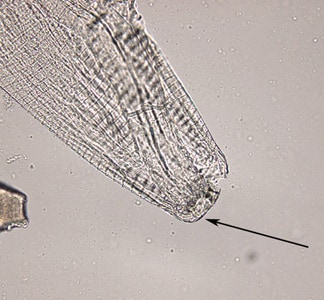
Figure A: Anterior end of a female Thelazia californiensis showing small, shallow, buccal cavity (arrow) and prominent widely spaced cuticular striations.
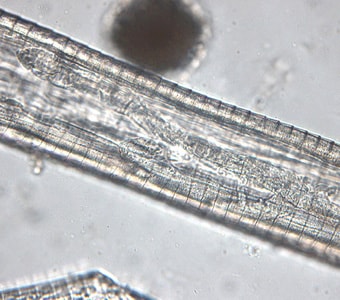
Figure B: Mid-section of a female Thelazia californiensis. Note the prominent, widely spaced, and serrate cuticular striations.
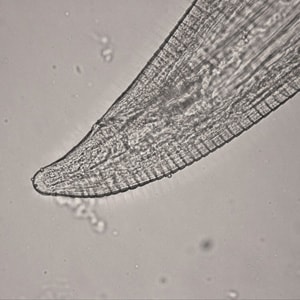
Figure C: Posterior end of a female Thelazia californiensis with protruding anal opening and phasmids.
Thelazia callipaeda
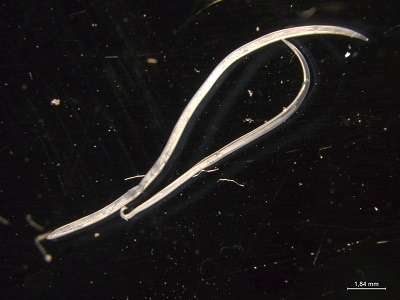
Figure A: Adult male and female Thelazia callipaeda.
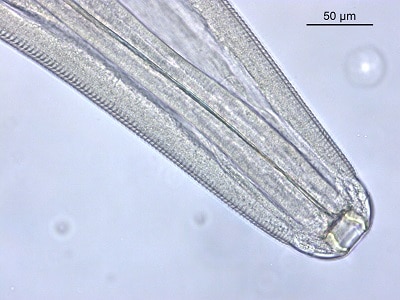
Figure B: Anterior of Thelazia callipaeda showing wide, moderate depth, buccal cavity and prominent tightly spaced cuticular striations.
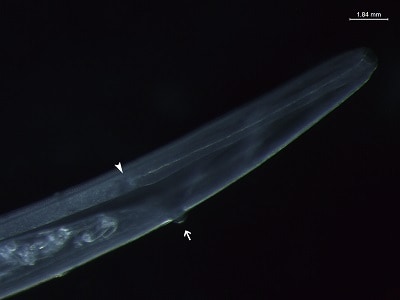
Figure C: Anterior of Thelazia callipaeda female showing vulval opening (arrow), which is protruded, anterior to esophageal-intestinal junction (dart).
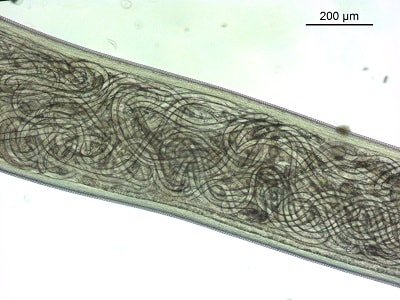
Figure D: Mid-section of adult female Thelazia callipaeda showing live larvae in utero
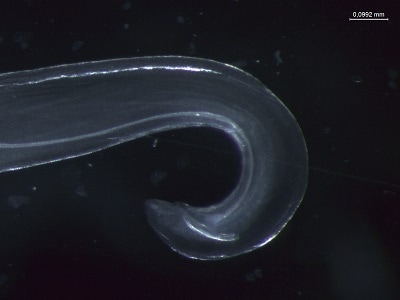
Figure E: Posterior of adult male Thelazia callipaeda showing spicules (Nomarsky phase contrast).
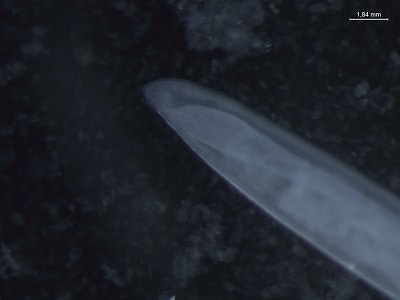
Figure F: Posterior of adult female Thelazia callipaeda showing anal opening (Nomarsky phase contrast)
Thelazia gulosa

Figure A: Adult female Thelazia gulosa removed from the surface of the eye of a human, showing intestine and egg-filled ovaries taking up the majority of the length of the body.

Figure B: Adult female Thelazia gulosa immediately after removal from the eye. Image courtesy of Oregon Health & Science University, Department of Pathology.

Figure C: Anterior of Thelazia gulosa showing buccal cavity, cuticular ridges, and esophageal-intestinal junction.

Figure D: Deep, cup-like buccal cavity and widely spaced, moderately distinct cuticular striations of Thelazia gulosa.

Figure E: Esophageal-intestinal junction of Thelazia gulosa.

Figure F: Non-protruding vulval opening (circle) of Thelazia gulosa almost at the same level as the esophageal-intestinal junction.

Figure G: Mid-body of Thelazia gulosa with prominent cuticular striations, intestinal tube, and ovaries containing spirurid eggs.

Figure H: Tail of female Thelazia gulosa with non-protruding anal opening and post-anal papilla.

Figure I: Adult Thelazia gulosa removed from the eye of a human, resting on a person’s finger.
arvae of Thelazia spp
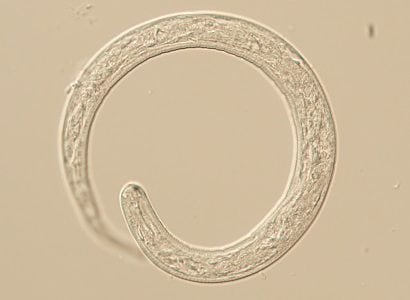
Figure A: L1 larva of Thelazia sp., likely T. callipaeda based on the patient’s travel history. L1 larvae measure up to 400 µm long and 13.5 µm wide. While not visible on this specimen, larvae are normally passed encased in a shell membrane.
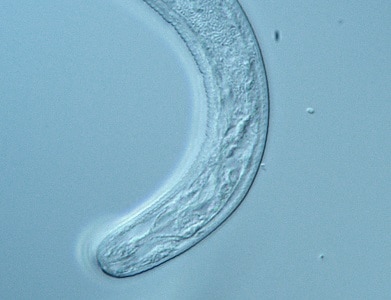
Figure B: Anterior end of the larva in Figure B. Note the lack of buccal cavity, and the developing cuticular striations.
Intermediate hosts of Thelazia spp.
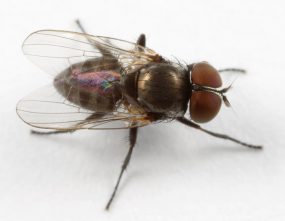
Figure A: Fannia canicularis, the lesser house fly. This species, as well as Fannia benjamini, is considered the primary vector of T. californiensis in the United States. Image courtesy of Joyce Gross.
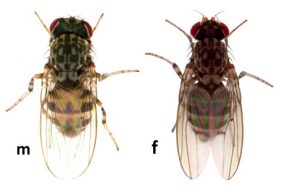
Figure B: Male (left) and female (right) Phortica variegata, the variegated fruit fly. This species is the main vector of Thelazia callipaeda in Europe and Asia. Image courtesy of Dr. Thomas Werner, Ph.D., Department of Biological Sciences, Michigan Technological University.
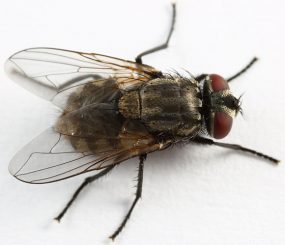
Figure C: Female Musca autumnalis, the autumn house fly. This species is the primary vector of T. gulosa in the United States and in Europe. Image courtesy of Joyce Gross.


